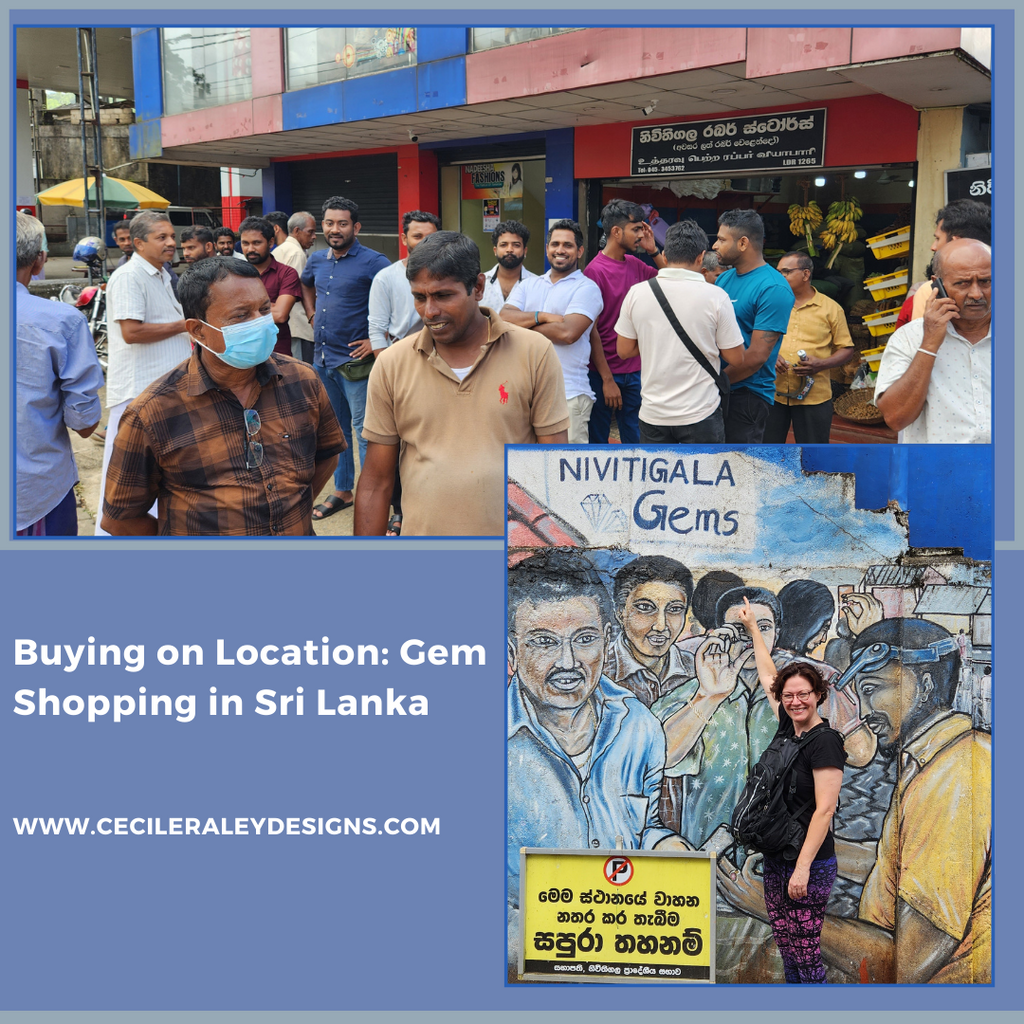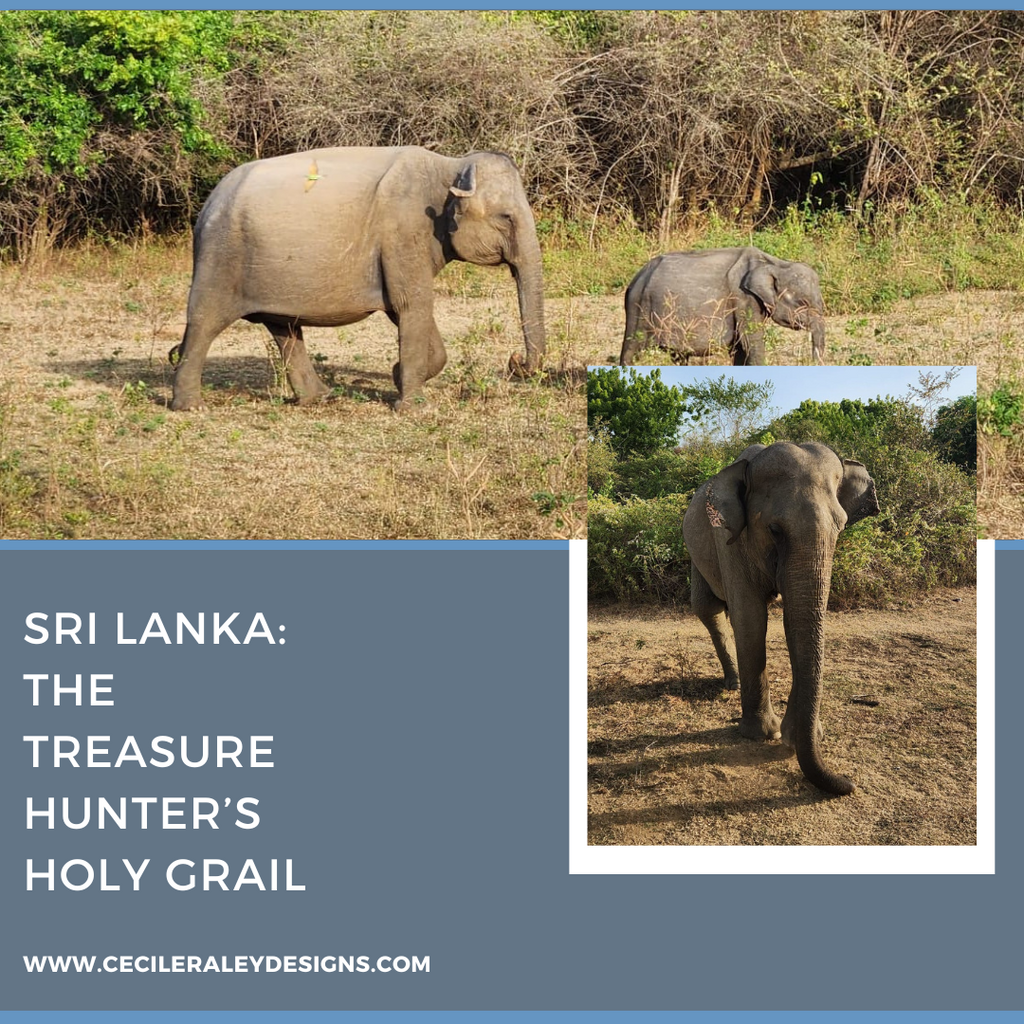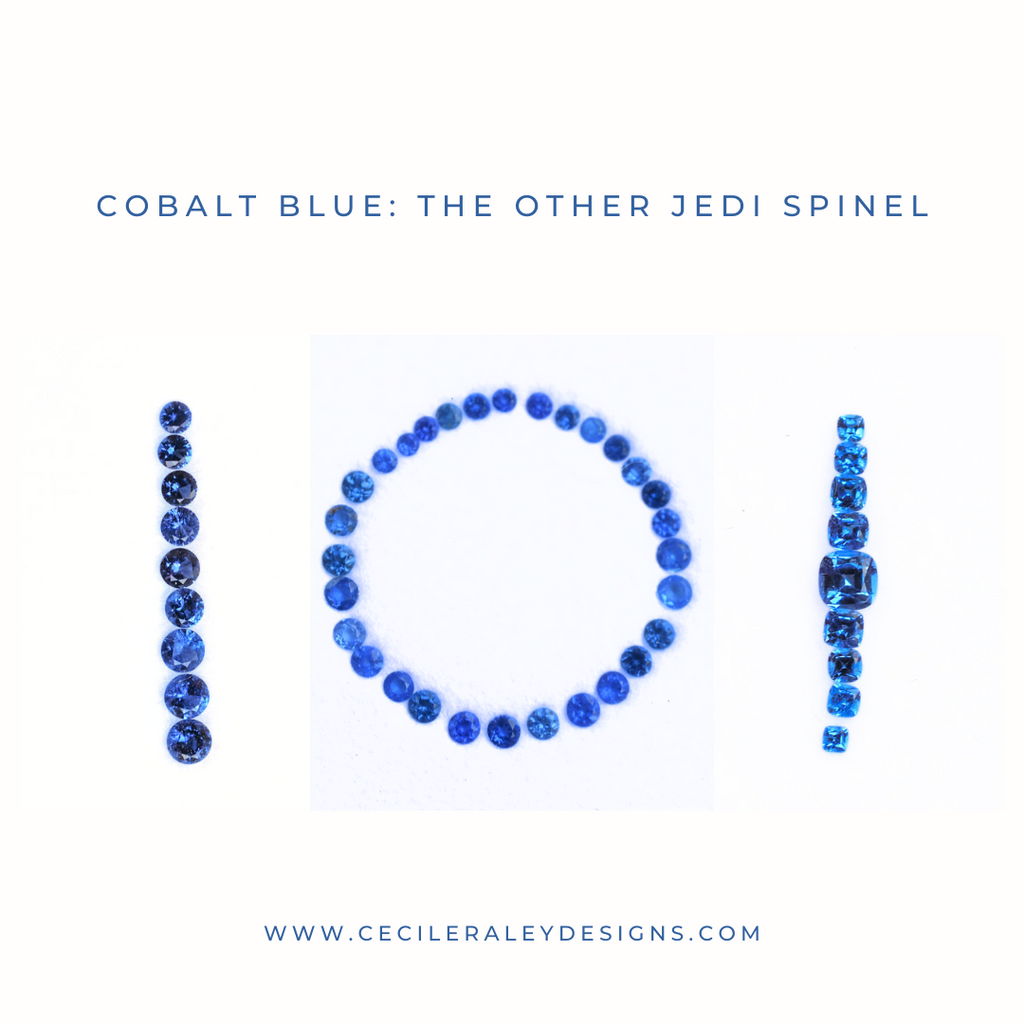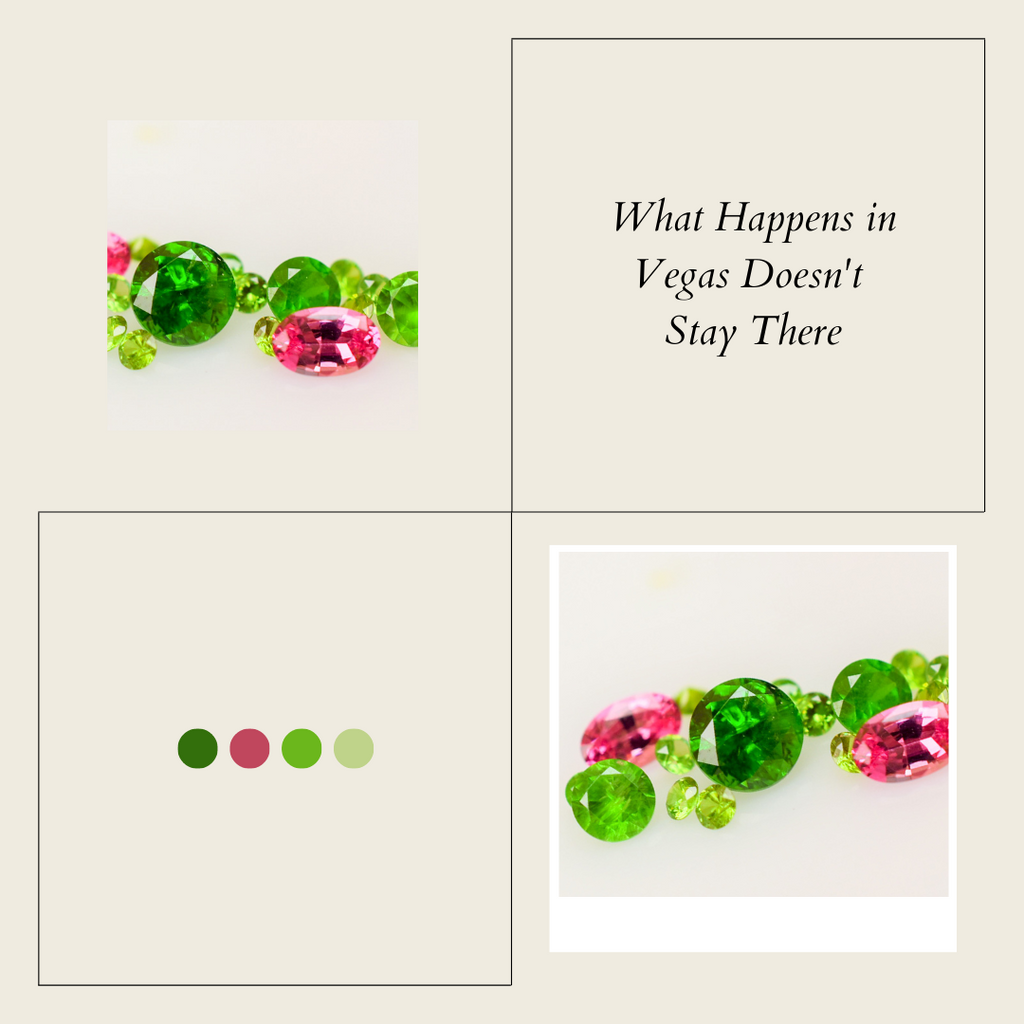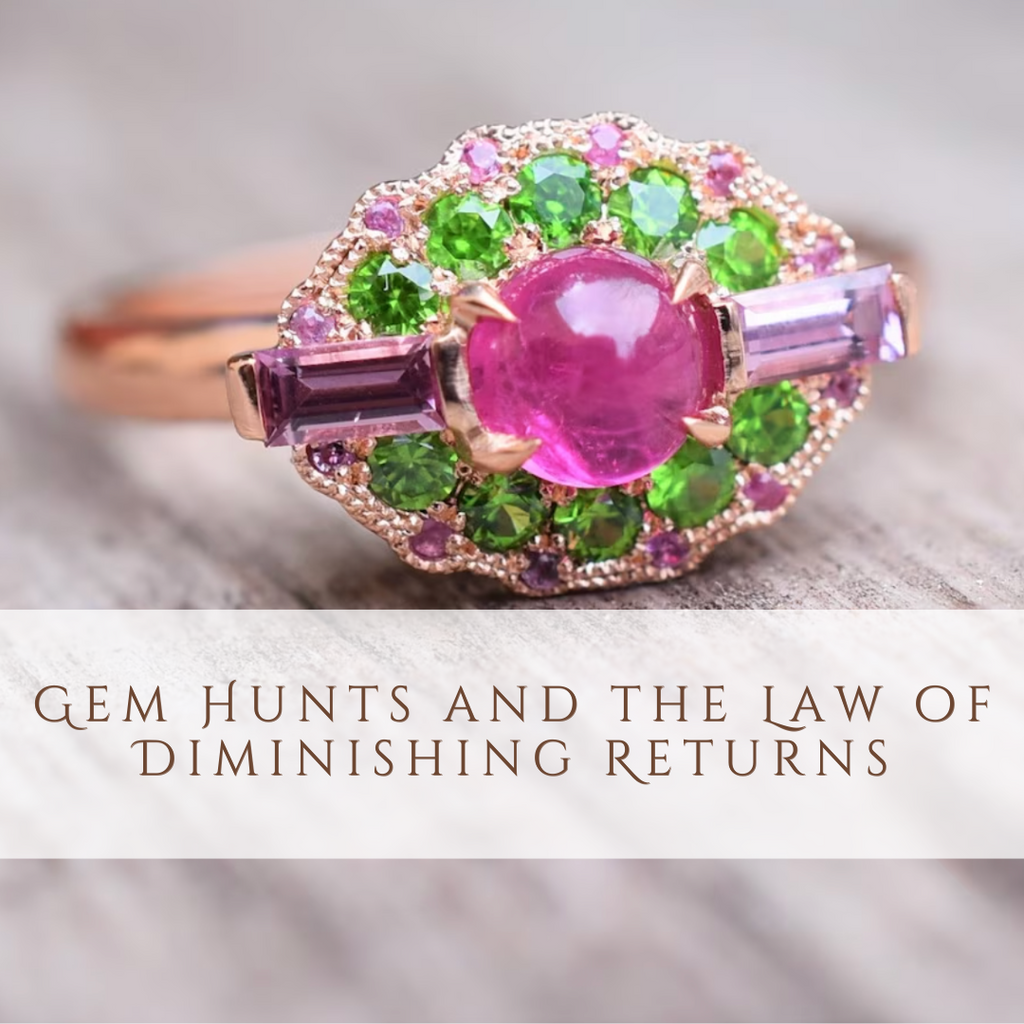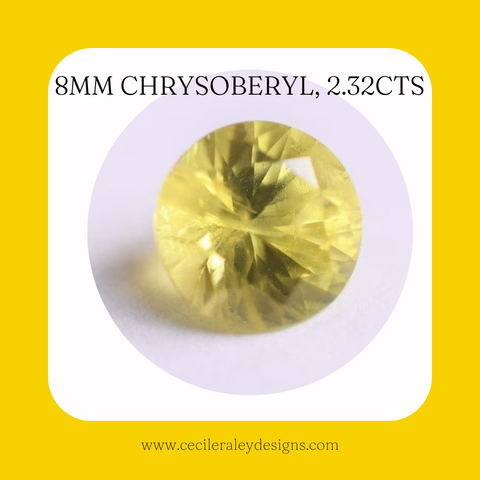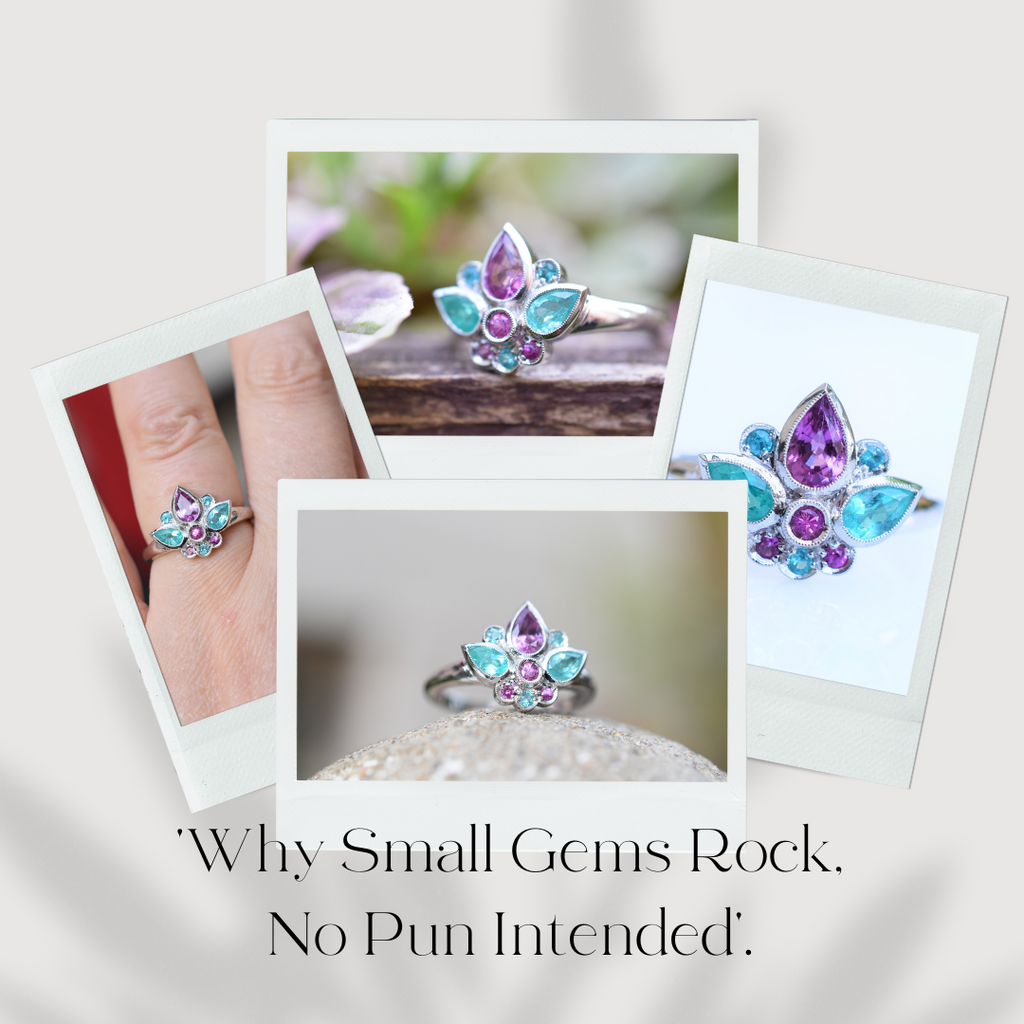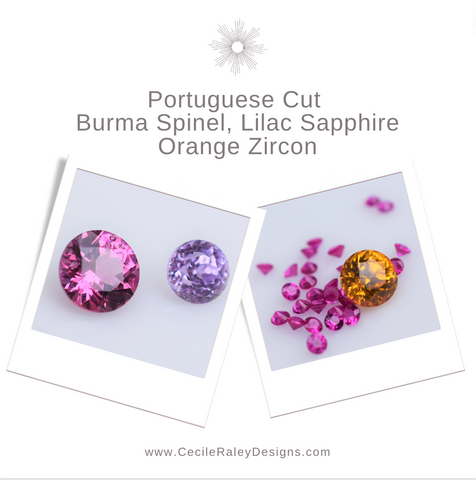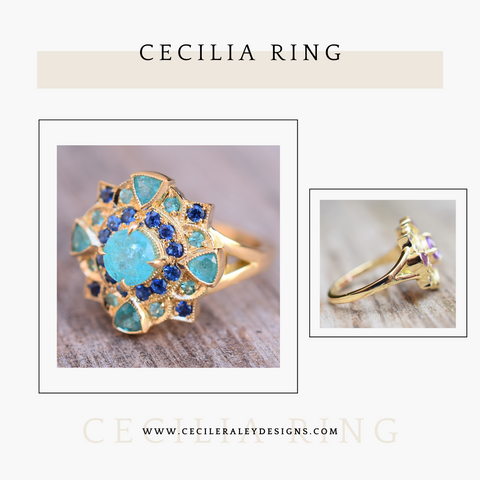Buying on Location: Gem Shopping in Sri Lanka
My clients say this to me all the time: “it’s cheaper to buy on location, right?” And I have heard many a story where people are asked by their relatives to, say “bring back a sapphire” when they go to Sri Lanka, or Colombia, or any other place known for gems. Let me tell you: it often isn’t cheaper on location. The prices you get will very much depend on what country you are going to and where you shop once you arrive there.
Unless you are in a jewelry store or at a gem show where all the gems you are looking at have a label with a fixed price, all gem trading, wherever you are in the world, is done via offer and counter offer. First, the seller will try to get you to make an offer. But unless you plan to make a low offer and you also know your prices extremely well, this is unadvisable for you as a buyer. And low offers, mind you, can offend a seller and ruin the trade. Sometimes it signals that you don’t know your stuff, or that you don’t want to be serious.
It is therefore best if you push for a price from the seller. This can have the advantage that you get a better sense of expectations, or of where the market currently is. But most of the time, especially in a situation where buyer and seller do not know one another, the first offer price will be too high. Sometimes it is far too high. It can be too much by a factor of two, three, or even a factor of ten. It can easily be a wildly imagined price. You might also be told that this wildly imagined sky high price is a good price!
Pay no attention to what you are told. It might be true that the price is a good one, more likely it will not be. Make the counter offer you want to make and watch the seller’s reaction – though also note that that a gem seller has a lot of experience in gem selling. Reading his (or her) face may not tell you a thing.

If I receive an offer that is sky high, I often just say “no thank you” and do not make a counter offer. I have many gems, I am not a needy party, and I am not loaded. If the offer I get is somewhat reasonable, for me this is two to three times my asking price, then I will make my counter offer that is slightly below what I am willing to pay. We then go back and forth a while, and we will either come to an agreement or not. “A while” can be a minute or two or an hour or two; or it can be a day or two as the seller might come back the next day having thought it over and agree to my asking price. Or I will tell them I have to think about it and get back to them. Sometimes I take all week, sometimes I just buy at asking price or at last offer. It depends on how much inventory I have, or if I have a buyer, if I think the gem is cool and new. Etc etc.
When you first start buying in a new location, you have to take some time to let people show you stuff, and you may go back and forth on pricing a lot. I often don’t buy on the first day, or I buy very little. If I want to make a good impression and show my interest, or if I see a really good thing, I will try to make a purchase even at a higher price.
The sellers will of course talk to each other about your purchases, your attitude, your interests etc. When I am new to a market and am starting with small buys, I want the sellers to communicate with one another because that will speed up the process of getting the right goods at hopefully the right price. This is something I do not do at a gem show. My buying usually lasts 3-5 days all in all (possibly with a day trip in between). If you are interested in something rare, it might take a day or two for sellers to get a hold of some gems for you, and if you are spending more money, people may also travel from further away to come and see you.
HIGH END BUYING
Very expensive deals are not done the way I just described though, or rarely (to give you perspective, I am talking a few thousand dollars and up, maybe 2,3K, maybe over 10K, that all depends). For security reasons, and relatedly because not all sellers/buyers want the exact nature of their deals to be public, those kinds of trades do not take place in full view of other sellers or buyers. My travel companion Joerg M., who had some previously established connections and was planning to make larger buys, met with the sellers on the terrace in front of his room and asked not to be disturbed. A good alternative meeting place is a guarded or otherwise secured office that is not open to the public. Sometimes people rent an office from a local seller for that purpose (and that seller may or may not get a commission if he also arranges some of the viewings). We had the option to do high end trading at the hotel office because Bhanu, the owner, had built an office specifically to that end. Deals like that might not even get concluded on your visit, though experienced buyers will want to be where the gem is so they can look at it in person. Additionally, they may want or need a lab nearby. Ratnapura has gem labs where you can get a 24 hr confirmation regarding whether a sapphire is heated, for instance. Bogota, Colombia, had a lab also.

Jochen, by contrast, was doing his $5-50 deals right in the middle of the market, or just standing in the middle of the street, leaning against a Tuk Tuk pushing back the crowd. I took some photos and videos of him trading like that in the neighboring town of Nivitigala, where I helped him keep track of the fast-paced trade by putting price stickers on his sapphires and putting them into bags, counting the money etc. And our third buyer, Michael M., a private collector, bought some gems for several hundred dollars directly at the market also. It just took him a few days to get comfortable with the idea and with the going prices for the items he wanted.
HONOR
As money exchanges hands, everyone watches and follow along because, again: all sales are final. Someone in the front of the crowd may show a parcel with a gem belonging to someone in the back, call the price to the back and collect the money if a trade occurs. Somehow it always works out. I have never seen a mistake. Or rather, if a mistake occurs, it is rectified within seconds. Having 10-15 pairs of eyes on a transaction can be very helpful in this case, even though it can also seem really weird at first.
I have also never seen anyone steal during a trade. Not a gem, and not money. If you cheat that way in this trade, you are out. You are unreliable and nobody wants to deal with you again. But keep this in mind too: overinflating a price is NOT considered cheating. If you pay too much, that is your problem. And buying a heated stone that you were told is not heated is also your problem, unless perhaps you have or want to establish a continuing and mutually lucrative relationship. In those cases people are more careful. When I push a seller and see how certain he is about a sapphire being heated, I can often see him backtracking a little, then I know to be cautious. If they say they ‘guarantee it’ and they know I might come back or buy more, my confidence is greatly increased. But even then there are no real guarantees.
Cheating by selling a gem as another gem (i.e. a zircon instead of a sapphire, or a spinel instead of a ruby) is not something I have seen happen before either, but I have seen it happen to Jochen quite often. In his case, however, I think the claims sellers make are partly the result of ignorance. Luckily, Jochen is an expert in gemstone rough, and when it comes to rare minerals, he often knows more than the seller does. I think some of these cases are more snafus than anything else. Just to give one example, most sapphire dealers do not know all the properties of serendibite (which co-occurs with sapphire finds). Minerals like that can sit unrecognized in a pile of yet to be sorted rough for months or even years before someone who is actually interested in them shows up. And then they are not sent to the lab for testing.
It also is amazing how these small pebbles can be handled with such care on a busy street. Rarely does something fall (placing a white towel on the table where you transact is a helpful and frequently used tool). If it does, all trading stops until the gem is found. There is a kind of respect for the value, but also for the owner of the gem, in all this convolution.
MY TREASURES
And what did I actually buy? I will start out by saying that I came to Sri Lanka with low expectations. As I have said repeatedly, ground level (by which I mean the mining region) has changed with the advance of technology, but also because of the geographic isolation due to Covid. People need to live, and so they adapt. You will now find many (many many) Sri Lankans, as well as Indians, Thai, Vietnamese etc. directly offering their gems to the general public via Instagram, or by taking their trade directly over to WhatsApp. Fast upload speed of photos and videos, cheaper and wider internet access, as well as the expansion of PayPal and TransferWise have facilitated such direct trading. Correspondingly, when you go to buy direct, local expectations are that you will pay the same retail pricing as an unsuspecting and uninformed online retail buyer. Sales are still considered final, it is still buyer beware, and consumer protection does not exist. I will say it again. Paying too much may be immoral, but it isn’t illegal.
As a result, prices on ground level have become highly inflated, making it difficult for the more discerning wholesale buyer to find good deals.
But good things come to those who wait. I am always in the market for interesting, rare goods that do not have a large retail market. For instance, I knew that green zircon comes from Sri Lanka, but I had not seen any on the US market in years. To me, this meant that if it turned up, it would be affordable because it probably had not been sold in a while (green zircon is not that common, not even in Sri Lanka). I turned out to be right.
Another thing I always keep a lookout for is blue spinel. Now here there are complications. The closer you get to ‘cobalt blue’, the more the prices go up, as everyone has now heard that the cobalt color fetches a pretty penny. But when it comes to other shades of blue, prices are better. I got a very pretty blue pear shape spinel for a good price for instance.
Lastly – for now – star sapphires had become rather scarce in the US market. And I had heard from Dudley that he had not seen many either. So I was surprised to be offered some really nice specimens on the first day for a good starting price. I didn’t negotiate down that far because I knew US prices were rising, and I know a good price when I see one. No need for me to cheat the seller. I got three pieces. I passed on the blue tones because most of those were still too high priced, and the ones that weren’t tended to be light blue to almost white, but not really white either.

Regarding things I didn’t buy, there were a few of those also. For example, I had hoped to find some nice chrysoberyl. And I did see quite a bit of it but most of it was brownish, or greenish brownish, and that is not a very popular color. There was some chrysoberyl cat’s eye, perhaps I should have bought some, but I didn’t unfortunately. I just wasn’t sure about it.
I also saw a rare star spinel with a beautiful star, but unfortunately it’s day color – when you move the strong light that shows the star away and take it outdoors – was muddy looking. With the torch the color was purple, without it a kind of hard to identify brown with a purplish tint. So I passed on that also. It wasn’t cheap either, so that was another reason against it.
Finally, I did buy some colored sapphire (the blues were all too expensive in my view). They are all at AGL right now to confirm ‘no heat.’ I got a glowy pink oval that was supposedly unheated, a few light apricot colors that won’t pass for pads nowadays because of the color stability test, but will satisfy people seeking something in light peach. And I got some cool and unusual shapes like a pair of hexagons, some more kites and two pairs of fancy or fantasy cuts that we don’t have a name for, but we’ve decided they should be called parallelograms.

SRI LANKA'S OTHER BEAUTIES
Lest you think that gemstones are the only thing to see in Sri Lanka, let me end this blog by pointing out a few other noteworthy things.
My personal favorite experience was meeting baby elephants. I had planned on doing a safari on my 5th day of being in Sri Lanka but I came down with food poisoning. I wasn’t the first – Joerg was out sick two days before me. Nor was I the last, as Jochen got sick the day after me. Our guess was a particular restaurant, and because we had each eaten different things there on different days, we presumed it was the water with which some of the things we ate were cleaned. It’s hard to say though.

Generally food is safe to eat for a foreigner, though remember your intestines do not know all the local parasites and may wish to fast track or entirely expel a meal in an abundance of caution. I’ve often had tummy problems on location. Most food in Sri Lanka consists of curries: Sri Lankan curries, Indian curries, Thai curries. Because they are spicy and heated, they are fairly safe to eat. The base food in Sri Lanka is rice or Kottu – roti bread cut into thin slices. Kottu is mixed with egg, vegetables, and curry or eaten with grilled meat on top, such as Tandoori chicken. Most menus offer beef, chicken, mutton, fish or vegetarian options. There’s no pork. Cold foods such as salads should be avoided, but fruit is good to eat if peeled. I recommend fresh fruit juices though remember that the fruit might get washed with local water. All drinking water should be bottled. Ice cream – delicious – should be avoided because the cooling chain is not guaranteed in developing nations, but I ate it anyway. I love Kulfi. My personal opinion on the food though is that I wouldn’t travel there for it unless spicy curry is something you want to eat every day. Because no matter how mild you ask the cook to prepare it, most of it is too hot for me to taste the rest of the spices. However, my experience might have been somewhat limited.

What I do recommend, however, is that you visit a national park. While Sri Lanka does not offer the variety of large animals you can see on Safari in Tanzania, Kenya or Namibia, there’s a lot to see nevertheless (it also costs way less than it does in Africa). In particular, elephants in Sri Lanka are a protected species, and the locals have a great appreciation for them. At dusk, when the elephants come out for feeding and to enjoy bathing, you can see Sri Lankans drive up to the outskirts of the national parks and sit outside, watching the elephant herds eat and play.

Many national parks also have nearby elephant orphanages, where you can visit during the feedings. The entrance fee goes to helping buy milk for the babies. A baby elephant is fed up to 8 times a day, and orphans might stay at the rescue for several years until they are old enough to seek out their own herd to join. The little ones are adorable to watch, sometimes they fall over their own trunk when they are in a hurry. And they show much affection both to their keepers and to other orphaned elephants. This is definitely a must see!
Sadly, because I was out of commission for two days, I didn’t get to tour more of Sri Lanka. The Kandy region (the central highlands) was strongly recommended to me and that is what I’d like to see the next time I go. And yes, I will definitely go back!


